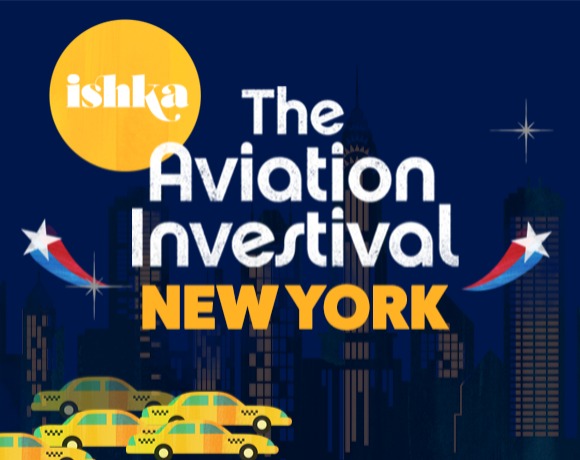in Capital Markets , Aviation Banks and Lenders
Monday 12 November 2018
Ishka NY Investival: Investors debate aircraft leasing risks and returns

Debt and equity investors at Ishka’s New York Investival conference confirmed that returns across aviation finance have tightened in the last 12 months.
Many investors at the conference have accessed the sector via high yield structured finance products such as aircraft-backed ABS, or through a direct equity investment into leased aircraft via an asset manager. Several institutional debt investors present were active in private placements and debt funds to finance aircraft deliveries. All investors acknowledged that returns have become tighter across the space as more investors have entered the aircraft leasing market.
“There has been a tremendous influx of capital in the sector in the last year or so, even compared to other sectors,” confided one private equity fund manager to Ishka on the side-lines of the conference.
However, while the overall mood was buoyant, investors were increasingly questioning whether current lower returns adequately reflected the risk involved, especially for securitised portfolios of older aircraft in ABS deals. Many lessors had speculated privately whether some investors may begin to leave the sectors because of rising interest rates. A recent report from Kroll argued the same point stating that higher interest rates could “help slow” the inflow of capital into the industry and moderate some of the negative effects of high competition stemming from abundant liquidity.”
However, arrangers and issuers stated that a lot of the “hot money” was stable with very little leaving the sector. And as one panellist put it: “If you leave what’s the alternative?”
Lessors debated whether 0.5 lease rate factors (LRF) in sale/leasebacks were a reality, or a market aberration (see Ishka Insight: Wizz tests lessors with ‘super aggressive’ RFP). But as one financier pointed out, even a 0.5 LRF could still equate to approximately a 6% return for some investors, more than many investors can achieve in real estate deals.
One concern raised by investors is what might happen to airlines if fuel prices increased, but many stated they were confident about the long-term prospects due to continuation of robust passenger traffic figures.
The appeal of older aircraft
Investors appeared to be aware of the difficulties in trying to source good portfolios of older leased asset at “good” prices. This was true for both investors in ABS, watching issuers source portfolios of aircraft for future issuances, as well as asset managers trying to satisfy funds. Part-out firms and end-of-life asset managers confirmed that they were increasingly able to sell aircraft at a higher premium. They explained it was often easier to sell to other end-of-life lessors at a premium than to sell to part-out companies. However, the flip side to this is that the same companies have seen purchase prices jump for aircraft older than 15 years as more lessors and part out firms scramble to obtain aircraft assets.
The Ishka View
At the conference many investors who have been in the market for several years were questioning reduced yields. In many ways this is an inevitable product of a continued influx of capital. More investors are still entering the aircraft leasing market than appear to be leaving. Even investors who are less enthusiastic about aircraft ABS deals still want to gain access to aircraft leasing bond issuances etc.
A lot of focus at the conference was on the appeal of tradable e-notes – a market that appears to be in its infancy. Separately, many investors, and several new firms, are expanding into the older aircraft space to chase higher returns. Ishka’s observation is that returns are higher but so are the risks. Older aircraft generally see more volatility around prices and require considerable technical expertise to manage an asset through the whole of its life.



Sign in to post a comment. If you don't have an account register here.